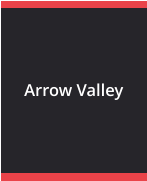




Redditch Walks is part of my Explore Redditch group of websites Designed, maintained and administered by Anthony Green
Redditch Town
Redditch developed in the 12th Century around a triangular green, due to its location on two important N-S and E-W medieval roads and the supply of services to passing traffic. The most important economic connections were Bordesley Abbey and its granges and the medium-sized towns of Kidderminster and Birmingham. It provided work for the local people at the abbey and the granges and, perhaps most importantly, created expertise in working metal, at the metal working mill at the abbey. From the 18th century manufacturing developed in the area, based on the production of needles, fish-hooks and fishing tackle. The first industrial sites were located on the River Arrow and utilised water power as well as a source of emery stones in the river. New factories were built and in 1856 there were 100 manufacturers employing around 10,000 workers. A new parish church was built in 1854-5 and a new ecclesiastical parish was created in 1855. The needle and fishing tackle industry was important throughout the 19th and early 20th century. By the beginning of the 20th Century, Redditch was a dynamic small industrial town with a population of about 20,000. Products produced by the town, needles, fishing tackle and springs were known throughout the world and the town centre green had acquired its fountain, bandstand and was surrounded by attractive Victorian buildings including the Smallwood Hospital. Redditch and its industry played a major part in the war effort during the second world war. As well as the increase in effort by the traditional industries, new industries arrived. These included High Duty Alloys, producing components for the aircraft of the RAF and the BSA, which was set up specifically for producing the BESA machine gun. In 1964, Redditch was awarded the status of ‘New Town’ which led to a massive investment in the infrastructure. This resulted in new roads which resolved traffic density problems in the town centre, new industrial centres, a major refurbishment of the town centre shopping and new housing. Today, Redditch is a dynamic 21st Century town with an advanced transport network, a modern indoor shopping centre in the heart of the town and a robust local sense of community. However, the town has not lost its heritage and it is still at heart the attractive small town created 900 years ago.Town Centre Walks
There are five walks beginning from the town centre. These have been updated for 2018. The walks can be printed two sides on an A4 sheet and then simply folded to provide a convenient A5 document. • Town Centre Walk Around the Church Green • Town Walk West Recreation Ground and Holmwood • Town Walk East Churches and Pubs • Town Walk North Industrial sites and Railway line • Town Walk South The Ridgeway and the Railway Tunnel




Redditch Walks is part of my Explore Redditch group of websites
Designed, maintained and administered by Anthony Green













